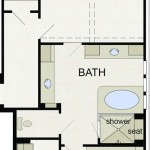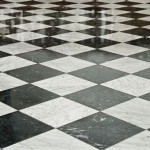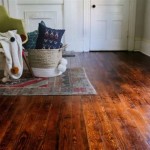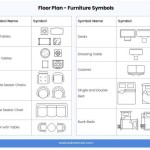The Best Rug for Hardwood Floors: A Comprehensive Guide
Hardwood floors are a timeless and elegant addition to any home, offering warmth, durability, and aesthetic appeal. However, they can be susceptible to scratches, dents, and fading from sunlight and daily wear. Rugs serve as a protective layer, adding comfort, style, and sound dampening to rooms with hardwood floors. Choosing the right rug is crucial not only for enhancing the overall design but also for preserving the integrity of the hardwood underneath. This article provides a comprehensive guide to selecting the best rugs for hardwood floors, considering factors such as material, construction, size, and appropriate rug pads.
Understanding the Importance of Rug Pads
A rug pad is an essential component of any rug setup on hardwood floors. Its primary function is to protect the floor from scratches and dents caused by the rug's backing or foot traffic. Without a rug pad, the rug can rub against the hardwood, leading to gradual wear and tear. Furthermore, rug pads offer numerous additional benefits that contribute to the longevity and comfort of both the rug and the floor.
Firstly, rug pads provide cushioning, making the rug more comfortable to walk on. This is particularly important in high-traffic areas such as living rooms and hallways. The added layer of padding also enhances sound absorption, reducing noise levels in the room. This is especially beneficial in apartments or homes with multiple stories where sound transmission can be a concern.
Secondly, rug pads prevent the rug from slipping and sliding, creating a safer environment for everyone in the household. This is particularly important for rugs placed in areas where people frequently walk or children play. A slipping rug can be a significant tripping hazard, but a properly sized and fitted rug pad will keep the rug securely in place.
Thirdly, rug pads help to extend the life of the rug itself. By providing a barrier between the rug and the floor, they prevent the rug fibers from being crushed or worn down prematurely. This can save money in the long run by reducing the need for frequent rug replacements.
Finally, certain types of rug pads can also provide moisture protection, preventing spills from seeping into the hardwood floor and causing damage. This is especially important in kitchens and dining areas where spills are more likely to occur. It is also vital in areas where pets might have accidents.
Selecting Rug Materials Safe for Hardwood Floors
The material of a rug plays a significant role in its suitability for hardwood floors. Some materials are more abrasive than others and can cause scratching or other damage over time. Choosing the right rug material is, therefore, critical to preserving the beauty and integrity of the hardwood. Natural fibers are generally considered the best option for hardwood floors due to their soft texture and breathability.
Wool rugs are a popular choice due to their durability, stain resistance, and luxurious feel. Wool fibers are naturally resilient and can withstand heavy foot traffic without flattening or losing their shape. Wool is also a good insulator, providing warmth and sound absorption. However, it’s essential to use a rug pad specifically designed for wool rugs, as some wool rugs can shed fibers that may stain or discolor the hardwood floor if not properly protected. Wool also requires professional cleaning, adding to their long-term maintenance costs.
Cotton rugs are another excellent option for hardwood floors. They are soft, absorbent, and relatively inexpensive compared to other materials. Cotton rugs are also easy to clean, making them a practical choice for high-traffic areas or homes with children and pets. However, cotton rugs are less durable than wool rugs and may require more frequent replacements. Additionally, they may shrink or fade when washed, so it's essential to follow the care instructions carefully.
Jute and sisal rugs are natural fiber options that offer a more textured and rustic look. They are durable and relatively inexpensive, making them a popular choice for casual living spaces. However, jute and sisal rugs can be abrasive and may scratch hardwood floors if not properly protected with a rug pad. It is crucial to choose a rug pad that is specifically designed for use with natural fiber rugs to prevent damage. Jute and sisal are also more prone to staining and can be difficult to clean, so they may not be the best choice for areas where spills are common.
Silk rugs are known for their luxurious sheen and soft texture. However, silk rugs are delicate and require special care, making them less practical for high-traffic areas. Silk rugs are also expensive and may not be the best choice for those on a budget. If you choose a silk rug for your hardwood floor, be sure to use a high-quality rug pad to protect it from wear and tear.
Synthetic rugs, such as those made from nylon, polyester, or polypropylene, are durable, stain-resistant, and relatively inexpensive. They are a practical choice for high-traffic areas or homes with children and pets. However, some synthetic rugs can be abrasive and may scratch hardwood floors if not properly protected with a rug pad. It is essential to choose a rug pad that is specifically designed for use with synthetic rugs to prevent damage. Look for synthetic rugs labeled as "safe for hardwood floors" or that have a soft, non-abrasive backing.
Considerations for Rug Size and Placement
The size and placement of a rug can significantly impact the overall look and feel of a room. Choosing the right size rug is essential for creating a balanced and harmonious aesthetic. Too small of a rug can make the room feel disjointed, while too large of a rug can overwhelm the space. Consider the following guidelines when selecting the appropriate rug size for different rooms.
In living rooms, the rug should be large enough to anchor the main seating area. Ideally, the front legs of all the furniture pieces should rest on the rug. This creates a cohesive and inviting space. If the room is smaller, you can opt for a rug that only covers the area in front of the sofa and chairs. However, avoid using a rug that is too small, as it can make the room feel cramped and unbalanced.
In dining rooms, the rug should be large enough to accommodate all the chairs when they are pulled out from the table. This prevents the chairs from catching on the edge of the rug and creating a tripping hazard. A good rule of thumb is to add at least 24 to 36 inches to the length and width of the dining table to determine the appropriate rug size.
In bedrooms, the rug can be placed under the bed, with the sides extending beyond the frame. This creates a soft and comfortable surface to step onto when getting out of bed. Alternatively, you can use smaller rugs on either side of the bed for a more minimalist look. Avoid using a rug that is too small, as it can make the room feel cold and uninviting.
In hallways, runners are a popular choice. The runner should be long enough to cover the majority of the hallway, but it should not extend too close to the walls. A good rule of thumb is to leave at least 6 to 12 inches of exposed floor on either side of the runner.
When placing a rug on hardwood floors, it is essential to consider the direction of the wood grain. Placing the rug with the grain can help to prevent scratching and wear. Additionally, avoid placing heavy furniture directly on the rug without using furniture pads or coasters. This can help to distribute the weight and prevent indentations in the hardwood floor.
Ultimately, the best rug for hardwood floors is one that combines aesthetics with practicality, protecting the floor while enhancing the room's overall design. Careful consideration of these factors ensures that the rug is not only visually appealing but also durable, safe, and easy to maintain, contributing to the longevity and beauty of the hardwood floors.
Regular cleaning and maintenance are also essential for preserving the beauty and integrity of both the rug and the hardwood floor. Vacuum the rug regularly to remove dirt and debris, and spot clean any spills or stains immediately. Professional rug cleaning is recommended every 12 to 18 months to keep the rug looking its best.
By considering these factors and following these guidelines, homeowners can select the best rug for their hardwood floors, creating a comfortable, stylish, and protected living space.

Best Rugs For Hardwood Floors Lifecore Flooring Products

How To Choose The Best Rug For Hardwood Floors

Best Area Rugs For Hardwood Floors Luxe Weavers

What Are The Best Area Rugs For Hardwood Floors Nycleaners Blog

10 Best Area Rugs For Hardwood Floors In Your Home

What Rugs Are Best For Hardwood Floors Dave S Floor Sanding Installing Inc

Best Type Of Area Rug For Hardwood Floors And Rugs

What Are The Best Rugs For Dark Wood Floors Nycleaners Blog

Are Rug Pads Necessary For Your Hardwood Floors Cameron The Sandman Wood Flooring Contractor

What Color Rug Complements My Hardwood Floors Angi








